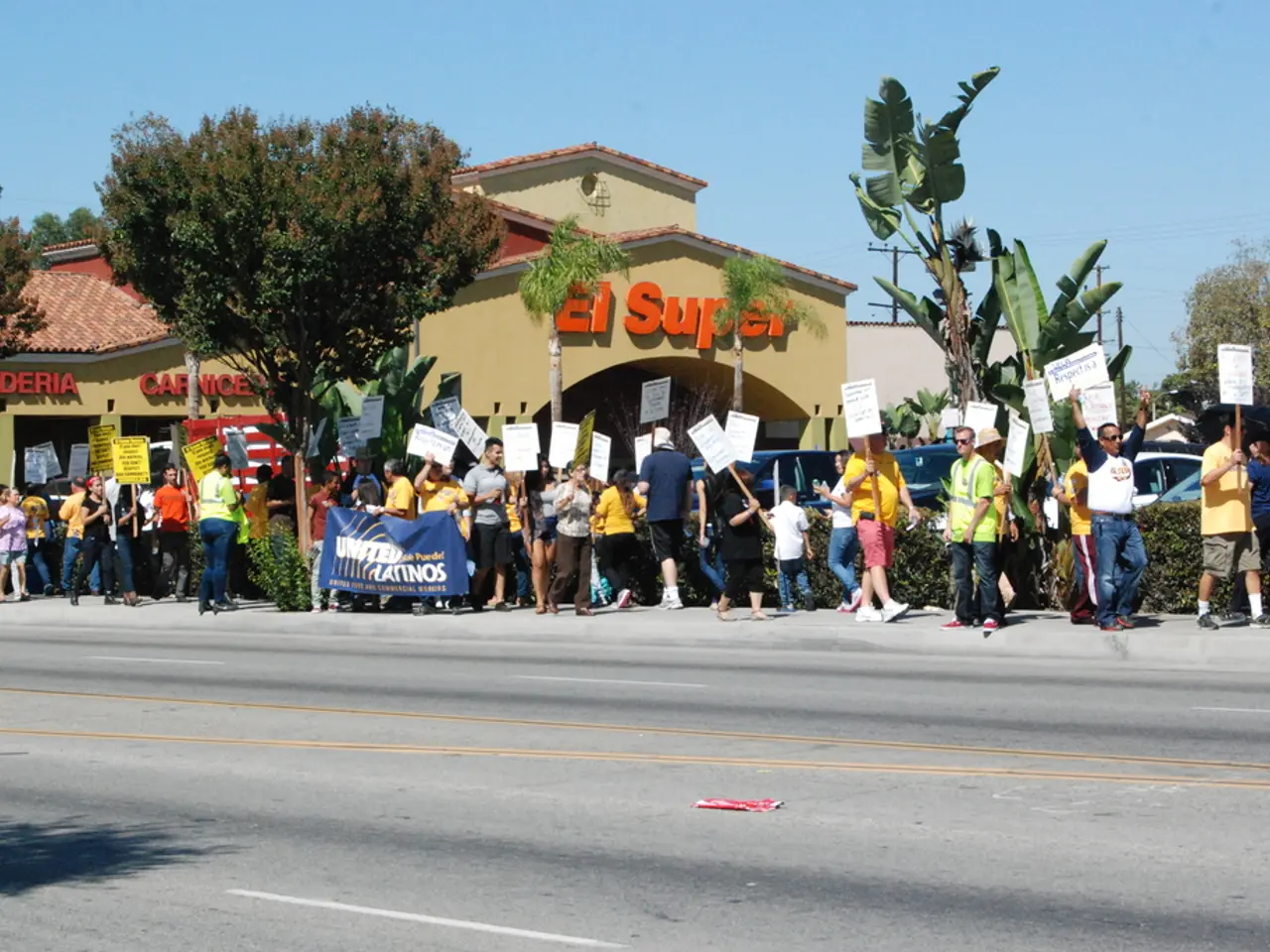Electronic Voting Campaigns Transformed Through Advanced Analysis of Vast Data Sets: Political Decision-Making Fueled by Big Data
================================================================================
In the digital age, big data has become an essential tool for political campaigns, offering real-time insights into public opinion, trending issues, and voter sentiment analysis. However, the ethical concerns surrounding big data in politics are significant, encompassing privacy violations, misuse of personal data, and potential manipulation of voter behavior.
To navigate these complexities, best practices for using big data in political campaigns emphasise systematic targeting, predictive analytics, ethical use, and continuous optimization.
One key element is statistical prediction and targeting. By leveraging big data, campaigns can identify pivotal states, persuade swing voters, and mobilise supporters with tailored messages, as demonstrated by the 2008 Obama campaign and now common practice globally [1].
Another crucial aspect is structured influence optimization. Frameworks like MIAC (Monitor, Identify, Assess, Counter) can be applied to model networks, detect adversaries (e.g., bots), simulate opinion dynamics, and deploy AI-powered targeted interventions efficiently [2].
Location-based targeting is another strategy, employing geofencing and geo-conquesting to send timely, context-relevant messages to voters near polling sites or opponent campaign locations, while respecting privacy laws and avoiding ad fatigue [3].
Data governance and community engagement are also vital, fostering inclusive, community-focused data practices that consider privacy, collective power, and transparent communication to build trust and ethical campaigns [4].
Reliable analytics integration is essential, combining big data analysis with qualitative expertise to prioritise legislative and voter outreach strategically, predict outcomes, and efficiently allocate resources for maximum impact [5].
Big data can also improve voter turnout by identifying low-propensity voters and engaging them with targeted outreach strategies. It helps shape messages based on audience sentiment, behaviour, and preferences, increasing engagement and persuasion [6].
Big data analytics can help campaigns identify specific voter groups, understand their interests, and deliver tailored messages that resonate [7]. The use of personal data in campaigning is becoming increasingly prevalent, and it's essential to take a holistic perspective on how personal data is used and abused [8].
Microtargeting, delivering specific political messages to small, well-defined voter segments based on data insights, is another strategy [9]. Big data helps candidates anticipate key voter concerns and prepare responses that align with public sentiment [10].
However, over-reliance on big data can lead to misinterpretation of data, alienation of voters through over-targeting, and neglecting grassroots engagement [11]. The shift towards data-driven elections raises questions about the role of data in democracy and potential manipulation and data misuse during elections [12].
Big data is also transforming policy development, enabling policymakers to understand public needs, forecast outcomes, and design evidence-based legislation [13]. In the future, big data-driven politics will involve deeper integration with AI, more advanced predictive models, and greater emphasis on ethical data practices [14].
Real-world examples of big data in politics include the Obama 2012 campaign's voter analytics program and India's large-scale digital voter outreach initiatives [15]. Machine learning automates data analysis, identifies patterns, and refines political strategies over time [16].
Big data can detect misinformation trends and help campaigns counter it effectively [17]. Political parties implement cybersecurity measures, encryption, and compliance with data protection laws to protect voter data [18]. Big data is also used in political fundraising to identify potential donors, predict donation likelihood, and personalise fundraising appeals [19].
In conclusion, big data offers a wealth of opportunities for political campaigns, enabling targeted messaging and tailored strategies. However, it is crucial to approach its use ethically, respecting privacy, fostering community engagement, and maintaining transparency to build trust in the democratic process.
References: 1. Campaigns & Elections 2. MIT Technology Review 3. Campaigns & Elections 4. The Guardian 5. Campaigns & Elections 6. MIT Technology Review 7. Campaigns & Elections 8. The Guardian 9. Campaigns & Elections 10. MIT Technology Review 11. Campaigns & Elections 12. The Guardian 13. MIT Technology Review 14. Campaigns & Elections 15. MIT Technology Review 16. Campaigns & Elections 17. Campaigns & Elections 18. MIT Technology Review 19. Campaigns & Elections
- Political campaigns leverage big data for statistical prediction and targeting, identifying pivotal states, persuading swing voters, and mobilizing supporters with tailored messages.
- To model networks, detect adversaries, simulate opinion dynamics, and deploy AI-powered targeted interventions efficiently, structured influence optimization frameworks can be applied.
- Location-based targeting employs geofencing and geo-conquesting to send timely, context-relevant messages to voters near polling sites or opponent campaign locations, while respecting privacy laws and avoiding ad fatigue.
- Reliable analytics integration is essential, combining big data analysis with qualitative expertise to prioritise legislative and voter outreach strategically, predict outcomes, and efficiently allocate resources.
- Big data analytics can help campaigns identify specific voter groups, understand their interests, and deliver tailored messages that resonate, a strategy known as microtargeting.
- Candidates can anticipate key voter concerns and prepare responses that align with public sentiment using big data, improving the accuracy and impact of political messaging.
- Over-reliance on big data can lead to misinterpretation of data, alienation of voters through over-targeting, and neglecting grassroots engagement, raising questions about the role of data in democracy.
- Big data can also be used in political fundraising, identifying potential donors, predicting donation likelihood, and personalizing fundraising appeals.
- Machine learning automates data analysis, identifies patterns, and refines political strategies over time, allowing campaigns to respond quickly to changes in public opinion.
- Big data can detect misinformation trends and help campaigns counter it effectively, enabling them to maintain the integrity of their communications.
- Political parties implement cybersecurity measures, encryption, and compliance with data protection laws to protect voter data and build trust with the public.
- Big data-driven politics will involve deeper integration with AI, more advanced predictive models, and greater emphasis on ethical data practices in the future.








